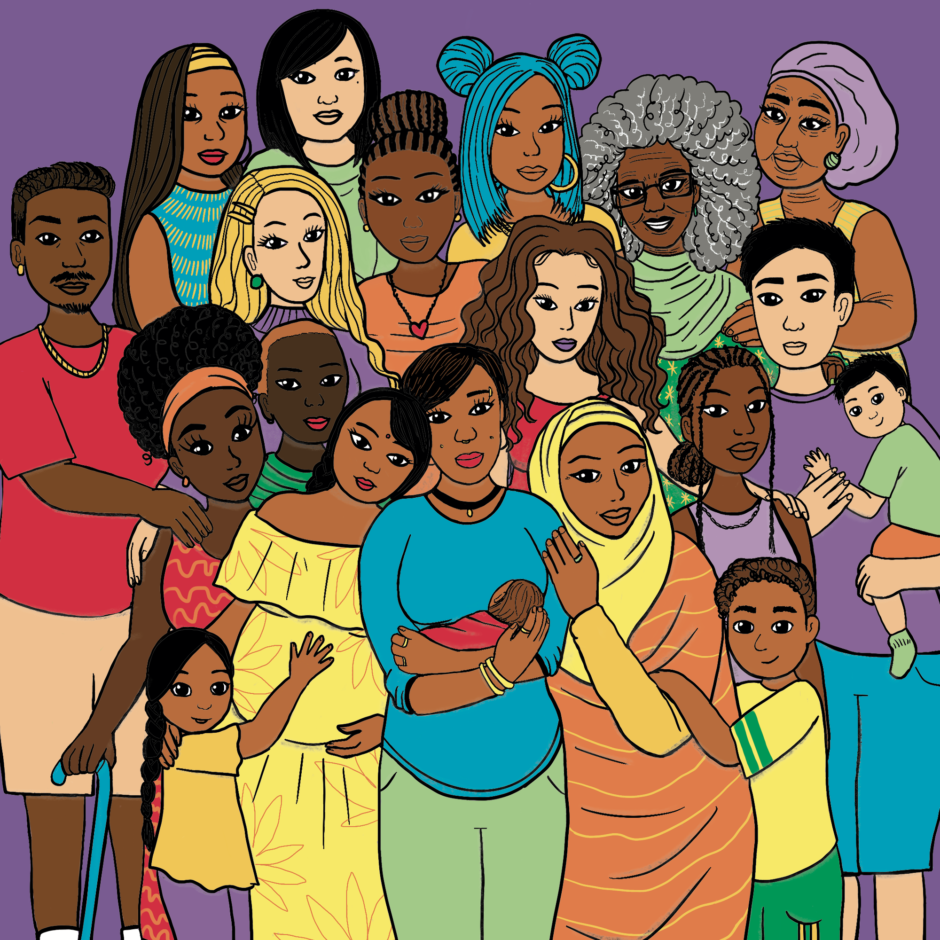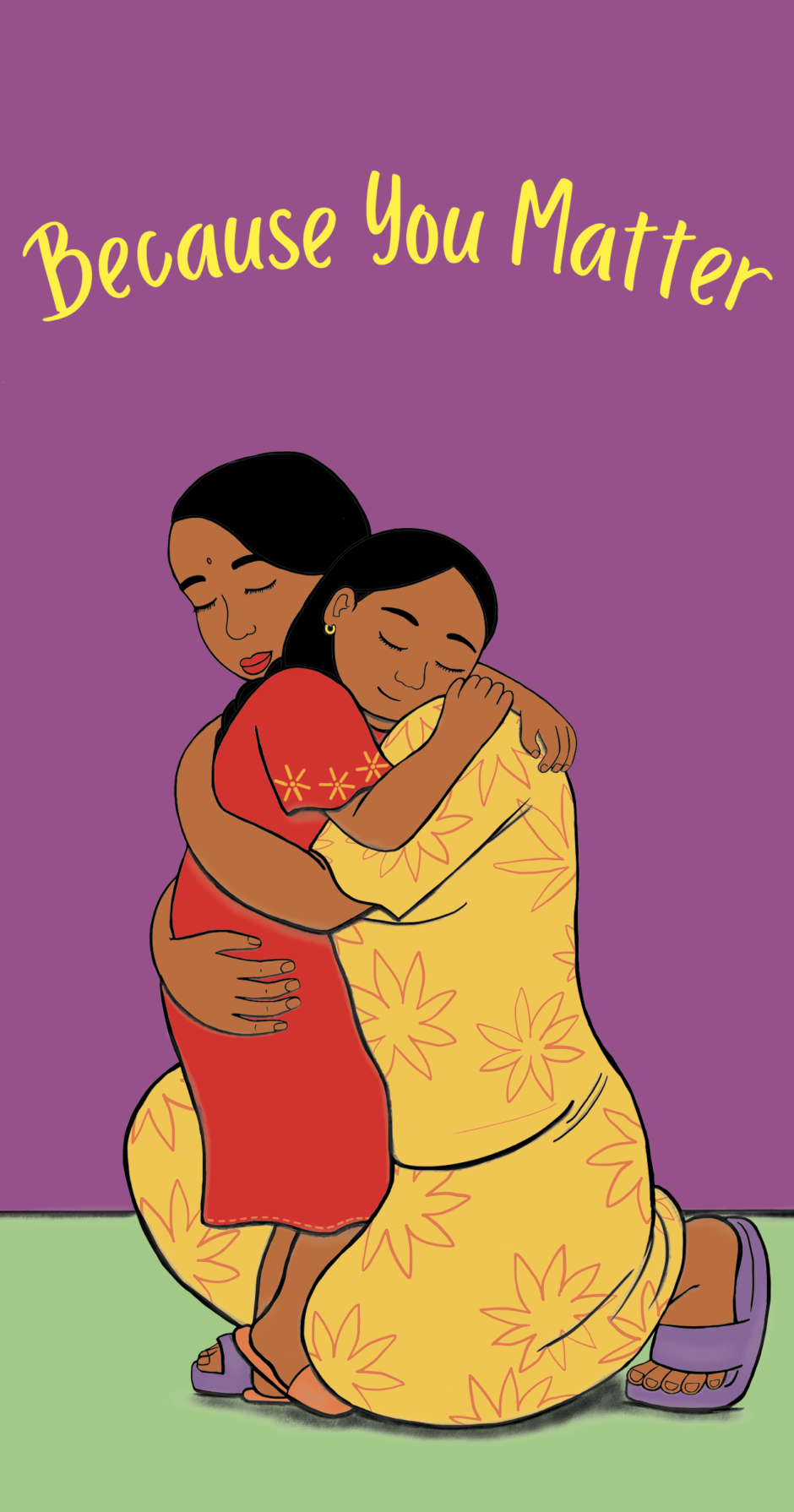
This guide came about through conversation between Ashley Albert, a survivor and activist, and Margaret Hobart, a longtime advocate for domestic violence (DV) survivors, and the Washington State Coalition Against Domestic Violence.
We know that the child welfare system often fails DV survivors. And we know that important discussions about child welfare policies are taking place. Every healing or justice effort around family policing needs the voices of DV survivors. We are inspired by the survivors who have spoken over decades about abuse they have experienced, and their visions for their children and themselves, and their communities.
For survivors who want to share their stories, and the advocates supporting them, this guide provides inspiration and some things to think about before, during and after talking about experiences publicly.
“I know owning our stories can ignite healing, hope, and change.”
ASHLEY ALBERT

To read and download the full illustrated guide, click below. Continue scrolling for additional resources.
Companion resources
Impacts of the child welfare system
- There’s No One I Can Trust: The Impact of Mandatory Reporting on the Help Seeking and Well Being of Domestic Violence Survivors, Caroline Lippy, Connie Burk, and Margaret Hobart with the National LGBTQ DV Capacity Building Learning Center, 2020
- Taken into foster care, through the eyes of a child, Kansas City Star, 2020
- Trauma Caused by Separation of Children from Parents, American Bar Association, 2019: A resource for attorneys on the impacts of separating children from parents at the border or by child welfare agencies.
- Partnered with a Survivor: a podcast from the Safe & Together Institute
Structural racism in the child welfare system
- Dorothy Roberts talking about her book, Torn Apart: How the Child Welfare System Destroys Black Families, Author Events, 2022
- I Have Studied Child Protective Services for Decades. It Needs to Be Abolished., Dorothy Roberts for Mother Jones, 2022
- Entangled Roots: The Role of Race in Policies that Separate Families, Elisa Minoff for the Center for the Study of Social Policy, 2018
- Fighting Institutional Racism at the Front End of Child Welfare Systems: A Call To Action To End The Unjust, Unnecessary, And Disproportionate Removal Of Black Children From Their Families, Children’s Rights, 2021
- Racial Disproportionality and Disparities in the Child Welfare System: Why Do They Exist, and What Can Be Done to Address Them? Alan J. Dettlaff and Reiko Boyd in The ANNALS of the American Academy of Political and Social Science 692(1), 2020
- Economic and Concrete Supports for Families, Chapin Hall at the University of Chicago, 2021
- A Key Connection: Economic Stability and Family Well-being – Addressing economic hardship as a factor in child welfare involvement, Chapin Hall at the University of Chicago, 2022
Healing from trauma
- NowMattersNow.org offers coping strategies for when problems feel unsolvable and feelings feel too big
- Grounding Techniques for PTSD, The Traumatic Stress Clinic
- The Psychology of PTSD, TED-Ed
- How to Overcome Trauma, The School of Life
Advocacy best practices
Movement building
Storytelling for social change
- Storytelling and Social Change: A Strategy Guide, Narrative Arts
- Your Story Matters, Josefina Lopez at TEDxBoyleHeights, 2014
- The Moth, Radio Hour
- WA SPEAKS: Whether you’re interested in becoming a speaker or hosting a speaker, you are helping to spread the word that people can and do recover.
- The Power of Vulnerability, Brené Brown for the 2011 TED Conference
Children and youth impacted by domestic violence
- Coercive Control in the Children’s and Mother’s Lives, Emma Katz, Oxford University Press, 2022
- little eyes, little ears: how violence against a mother shapes children as they grow, Alison Cunningham & Linda Baker, Centre for Children and Families in the Justice System, 2007
- The Amazing Brain: Trauma and the Potential for Healing, Dr. Linda Chamberlain: Booklets about early and adolescent brain development, trauma, and what parents and caregivers can do to promote healthy brain development
- ChildMind Institute’s video series on essential coping skills for grade school, middle school, and high school students
Guide Illustrations by Mousy DeVilla